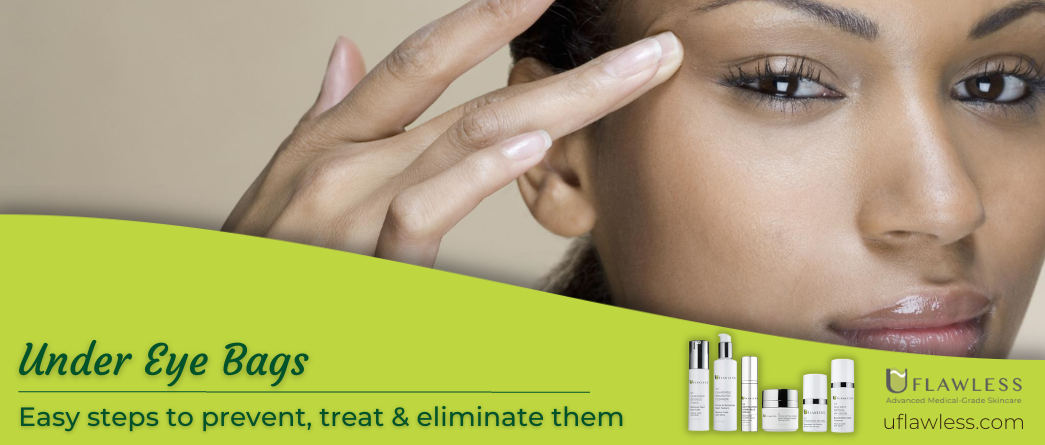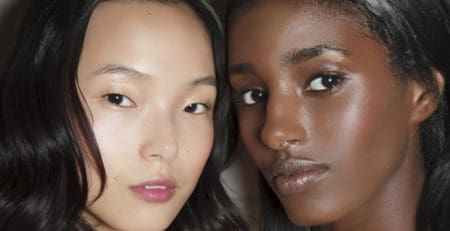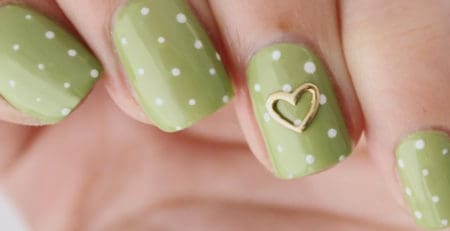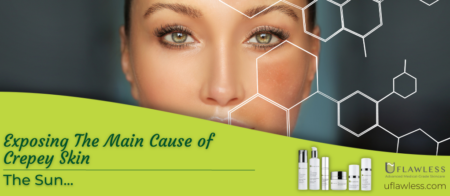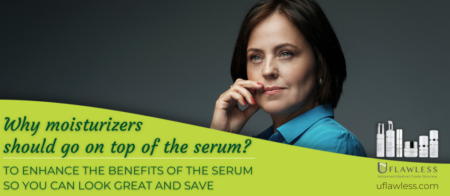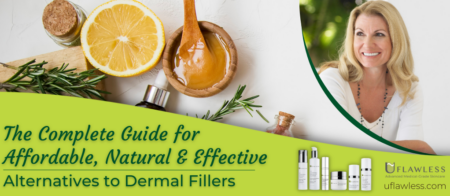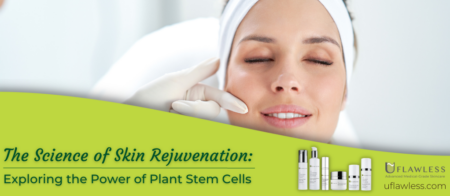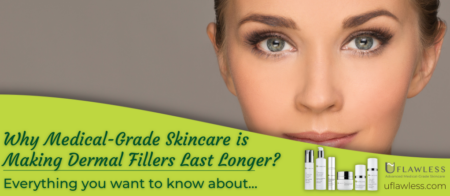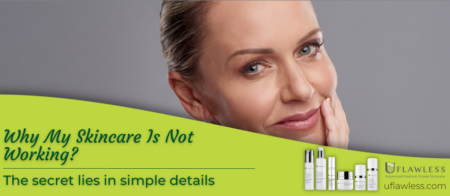Under Eye Bags – Easy Steps to Prevent, Treat & Eliminate Them
Seeing under-eye bags in the mirror? You’re not alone. Many people notice puffy eyes, dark circles, and wrinkles. It’s time to follow easy steps to prevent, treat and eliminate them.
Let’s figure out how to tackle them, even when you’re tired or think it’s just in your genes.

Why Do Eyes Get Puffy?
There are many reasons, often tied to habits.
- Drinking enough water? Aim for 8-12 glasses daily before dinner. Skip sodas; they have too much salt and sugar.
- Eating lots of processed or colored food? They can make eyes puffy due to additives and salt.
The skin around the eyes is delicate. Small blood vessels, or capillaries, can weaken over time, causing fluid buildup and dryness.
Healthy capillaries can help reduce puffiness.
Understanding Puffy Eyes: Causes and Influences
While there are several causes of puffy eyes, understanding and addressing individual habits and influencers can be the key to prevention and reduction.
Regular hydration, a balanced diet, and skincare tailored to nourish the delicate under-eye area can make a significant difference in preventing and treating puffiness.
1. Hydration: Water is vital for our body to function optimally. When we don’t consume an adequate amount of water, our body tends to store and retain the available water as a survival mechanism, leading to puffiness.
- Water Intake: A common guideline is to aim for 8-12 glasses of water daily. Ensuring you’re well-hydrated can deter the retention of fluids in unwanted areas like under the eyes.
- Sodas and Sugary Drinks: Beverages like sodas usually contain high amounts of sodium (salt) and sugar. Excessive sodium causes the body to retain water, which can contribute to puffiness around the eyes. Sugar, on the other hand, can cause inflammation, which can exacerbate swelling.
2. Diet and Food Choices: The foods we eat have a direct impact on our skin’s health, including the area around our eyes.
- Processed Foods: Many processed foods are laden with sodium, artificial additives, and preservatives. Regular consumption of these foods can lead to water retention and inflammation, resulting in puffiness.
- Artificially Colored Foods: Such foods often contain synthetic dyes and other chemicals that can cause allergic reactions in some people, leading to inflammation and puffiness.
3. Skin and Capillary Health: The skin around our eyes is thinner and more delicate compared to other parts of the body. This makes it more susceptible to various internal and external factors.
- Delicate Capillaries: Tiny blood vessels, or capillaries, are responsible for supplying blood to the skin. Over time, due to factors like aging, lack of nutrients, or oxidative damage, these capillaries can become fragile. When these vessels weaken or get damaged, they can leak small amounts of blood, which can pool under the eyes. This not only causes puffiness but can also contribute to the appearance of dark circles.
- Fluid Buildup: The fragility of capillaries combined with other factors like high salt intake can lead to the accumulation of fluid in the under-eye area, manifesting as puffiness.
- Importance of Healthy Capillaries: Maintaining the health of these capillaries is essential. A robust circulatory system ensures proper fluid drainage, reducing the likelihood of under-eye bags.
Quick Fixes for Puffy Eyes
Got an important event? Here’s how to reduce puffiness fast:
- Stay calm. Stress makes it worse.
- Wash your face with cool water.
- Use a cold compress if you have time.
- Massage your face with a gentle cleanser.
- Pay attention to the eye area. Gentle circles can boost blood flow.
- Use an eye serum, followed by a moisturizing eye cream.
- Finish with makeup, but remember to figure out the root cause of the bags.
Other Causes of Puffy Eyes
Drinking alcohol and eating salty foods can lead to puffiness. Alcohol dries you out while salt makes you retain water. Stay hydrated!
The Effects of Alcohol and Salt on Puffiness
When discussing puffiness, particularly around the eyes, two common culprits often come into the picture: alcohol and salt.
Both have notable effects on the body’s hydration balance, leading to the swollen, puffy appearance we sometimes notice after indulging.
Here’s a another deeper dive into the impact of these substances:
1. Alcohol’s Role in Dehydration: Alcohol acts as a diuretic, meaning it prompts the body to remove fluids at a faster rate through urination. This leads to a drop in the body’s hydration levels.
- Direct Dehydration: When we consume alcohol, our body loses more water than what’s taken in. This imbalance results in dehydration. Dehydrated skin loses its elasticity and appears dull and saggy.
- Impact on Skin: Dehydration can make the skin more vulnerable to wrinkling and other signs of aging. Around the eyes, where the skin is already thin and delicate, dehydration can cause the skin to appear even more sunken and dark, adding to the puffy look.
2. Salt and Water Retention: Salt, particularly in excessive amounts, plays a significant role in water retention.
- Osmosis: Our cells maintain a specific concentration of electrolytes. When we consume too much salt, the concentration outside our cells increases, leading to water moving out of the cells to balance the concentration. This results in water retention in the spaces between cells.
- Swelling and Inflammation: Excess water retention can lead to swelling in different parts of the body, including the face and around the eyes. Additionally, a high salt intake can cause inflammation in the body, further exacerbating puffiness.
3. Balancing Act: Staying Hydrated: Proper hydration is vital to counteract the effects of alcohol and salt.
- Water Intake: Drinking ample water helps in flushing out excess sodium from the body and counteracting the diuretic effects of alcohol. It helps in maintaining the skin’s elasticity and overall health.
- Nutrient-rich Foods: Consuming foods high in potassium, such as bananas and spinach, can help balance high sodium levels. Additionally, certain foods like cucumbers and strawberries have natural diuretic properties that can assist in reducing water retention.

The Role of Sleep and Under-Eye Bags
People who don’t sleep well often have swollen, dark eyes. It’s why it’s called “beauty sleep”. Sleeping habits impact how you look.
For better sleep:
- Don’t eat heavy meals before bed.
- Limit water after dinner to avoid waking up.
- Use the bathroom before sleeping.
- Turn off the screens and relax.
- Consider meditation for peace.
Dark Circles: Why Do They Form?
Dark circles often result from weak capillaries. Sometimes, they point to vitamin or mineral deficiencies.
It’s best to see a dermatologist if you’re concerned about dark circles.
Unpacking Dark Circles: Causes and Concerns
Dark circles under the eyes are a common cosmetic concern that many people face.
These shadows can make one appear older or more tired than they actually are.
While there can be numerous factors contributing to the formation of dark circles, let’s delve deeper into the primary causes mentioned and expand on them.
1. Weak or Fragile Capillaries: The skin beneath our eyes is exceptionally thin and semi-transparent. This means that the underlying blood vessels are more visible than in other areas of the body.
- Capillary Leakage: When the tiny blood vessels, or capillaries, under the eyes weaken, they might leak a small amount of blood. Over time, these leaks can accumulate, giving the appearance of darkness or bruising.
- Oxygenated Blood: Blood that is low in oxygen appears bluer, which can further darken the appearance of these capillaries through the thin skin.
2. Nutrient Deficiencies: Certain vitamins and minerals are crucial for skin health and blood vessel integrity.
- Iron: An iron deficiency, or anemia, can result in a paler complexion, making the blood vessels beneath the eyes more prominent.
- Vitamin K: This vitamin plays a pivotal role in blood clotting and may affect the visibility of blood vessels under the eyes. Some studies suggest that Vitamin K can help strengthen capillary walls, reducing the chances of leakage.
- Vitamin B-12: A deficiency in this vitamin can lead to fatigue, which may accentuate dark circles.
- Other Nutrients: A lack of nutrients like Vitamin E and Vitamin C, both of which are antioxidants, can impact skin health, making it more prone to discolorations.
3. Consulting a Dermatologist: While topical creams and home remedies might offer temporary relief, it’s essential to understand the root cause of persistent dark circles.
- Expert Analysis: A dermatologist can evaluate the under-eye area, considering factors like skin tone, age, and overall health. They can provide insights into whether the dark circles are due to vascular issues, hyperpigmentation, or other causes.
- Tailored Treatments: Based on the diagnosis, dermatologists can recommend treatments ranging from topical creams to laser therapies or fillers to address the specific issue at hand.
- Holistic Approach: Alongside treatments, a dermatologist may also advise on lifestyle changes, such as improved diet, better sleep routines, and sun protection, all of which can play a role in mitigating dark circles.
Eye Bag Myths
You might’ve heard of home remedies like cucumbers.
While some natural ingredients like strawberries and aloe vera offer benefits, they work only on the skin’s surface.
For deeper benefits, you need products made for the eye area.
Deciphering Eye Bag Myths: From Cucumbers to Cutting-Edge Products
The age-old struggle with under-eye bags has given birth to a plethora of myths and home remedies, passed down through generations or propagated in popular culture.
While some of these remedies have a basis in science, it’s essential to differentiate between short-term relief and long-term solutions. Let’s dissect these myths further.
1. The Cucumber Classic: The image of a relaxed individual with cucumber slices covering their eyes is almost iconic in the realm of beauty and skincare. But what’s the real deal?
- Hydration and Cooling: Cucumbers are mostly water. When chilled and placed over the eyes, they can offer a cooling effect, providing temporary relief from puffiness.
- Antioxidant Content: Cucumbers also contain antioxidants, which might help soothe irritated skin. However, the efficacy in treating under-eye bags is limited.
2. The Appeal of Natural Ingredients: Many swear by the power of nature’s bounty to address cosmetic concerns. Ingredients like strawberries and aloe vera are often touted as solutions.
- Strawberries: These fruits are rich in antioxidants and can help in revitalizing the skin. Their mildly acidic nature may also help lighten dark circles slightly, but the effect is superficial.
- Aloe Vera: Known for its soothing and anti-inflammatory properties, aloe vera can hydrate the skin and reduce puffiness. However, its effects, like that of cucumbers, are limited to the skin’s outer layer.
3. Delving Deeper: The Need for Specialized Products: While natural remedies can offer temporary relief, lasting solutions require a more in-depth approach.
- Targeted Formulations: Products specifically designed for the under-eye area often contain ingredients that can penetrate deeper skin layers. This allows them to address the root causes of under-eye bags, such as weak capillaries or fluid retention.
- Comprehensive Care: Quality eye products often contain a mix of hydrating agents, peptides, antioxidants, and other compounds that work synergistically. This holistic approach can reduce puffiness, lighten dark circles, and improve overall skin health in the eye region.
- Safety and Sensitivity: The skin around the eyes is delicate. Products designed for this area take into account this sensitivity, ensuring effective treatment without causing irritation.
The Best Solution for Eye Issues
X3 Peptide Eye Serum is formulated specifically for the eye contour. It targets the top 3 causes of Puffy Eyes and Dark Circles:
- Weak capillaries cause dark circles.
- Fluid buildup leads to puffiness.
- Skin sagging due to age and dryness.
Youthful Look with X3 Peptide Eye Serum
Transform Your Eyes: Dive deep into the rejuvenating power of our X3 Peptide Eye Serum. Expertly crafted for the delicate eye contour, this medical-grade formula is your answer to tired, aging eyes.
Nature Meets Science: Harness the potent blend of Active Peptide Complex and Hawaiian Sea Extract. Together, they work wonders on diminishing crow’s feet, reducing dark circles, and erasing puffiness.
Triple-Action Power: This serum is not just another addition to your skincare. It actively targets three essential conditions, ensuring a radiant eye contour:
- Drain & Detoxify: Say goodbye to those burdensome eye bags.
- Strength & Structure: Reinforce fragile capillaries and uplift the eye area with improved collagen synthesis.
- Firm & Smooth: Experience unparalleled firmness and elasticity that breathes youth into your gaze.
Clinically Proven Results: Our formula doesn’t just promise; it delivers. Clinical tests have shown remarkable reductions in dark circles and visible crow’s feet.
Rediscover Confidence: Let your eyes tell a story of rejuvenation and timeless beauty. With X3 Peptide Eye Serum, you’re not just investing in a product; you’re investing in yourself. Experience the difference today!
Scientific References on Easy Steps To Treat, Prevent, and Eliminate Under Eye Bags
“Diet and Dark Circles“. WebMD.
“Why Dark Circles Under Eyes Appear and How to Get Rid of Them”. Medical News Today.
Sarkar, Rashmi, et al. “Periorbital Hyperpigmentation: A Comprehensive Review.” The Journal of Clinical and Aesthetic Dermatology, 2016
Mukherjee, Pulok K., et al. “Bioactive compounds from natural resources against skin aging.” Phytomedicine, 2011


